

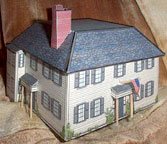
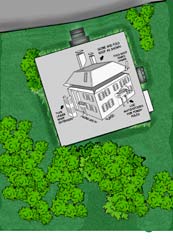
Emerson House - $$4.95
Essayist, philosopher, and poet Ralph Waldo Emerson lived here from 1835 until his death in 1882. Emerson was a strong influence in drawing other writers to Concord MA as well as a long succession of visitors to his doorstep. This quite accurate model is an important part of the New England Collection and comes in three scales along with appropriate layouts.
Ralph Waldo Emerson's House
Concord Massachusetts
“To laugh often and much; to win the respect of intelligent people and the affection of children...to leave the world a better place...to know even one life has breathed easier because you have lived. This is to have succeeded.” Ralph Waldo Emerson
 Ralph Waldo Emerson built this house and planted the pines you see circling it. He lived here from 1835 until his death in 1882. During Emerson's European tour, Thoreau lived in the house. Emerson was a strong influence in drawing other writers to Concord as well as a long succession of visitors to his doorstep. His entire study has been moved intact with its books and furniture to the fireproof quarters of the Antiquarian House across the way. The other rooms are much as they were in Emerson' day.
Ralph Waldo Emerson built this house and planted the pines you see circling it. He lived here from 1835 until his death in 1882. During Emerson's European tour, Thoreau lived in the house. Emerson was a strong influence in drawing other writers to Concord as well as a long succession of visitors to his doorstep. His entire study has been moved intact with its books and furniture to the fireproof quarters of the Antiquarian House across the way. The other rooms are much as they were in Emerson' day.
Essayist, philosopher, and poet Ralph Waldo Emerson was born in Boston on May 25, 1803. Son and grandson of Protestant divines, Emerson attended Harvard College and Harvard Divinity School, entering the Unitarian ministry in 1829. A popular, if unconventional preacher, young Emerson's sermons consisted of personal reflections on spirituality and virtue. He avoided expounding doctrine or engaging in scriptural exegesis. Increasingly dissatisfied with traditional protestant theology, Emerson resigned from the ministry in 1832. By the end of the decade, however, he was the leading exponent of transcendentalism, a philosophy that maintains the universality of creation, upholds the intrinsic goodness of man, and grounds truth in personal insight.
Ralph Waldo Emerson 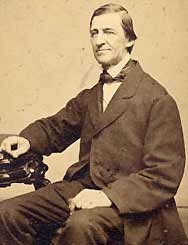
Ralph Waldo Emerson came of the academic class. His ancestors for five generations had been scholars and most of them had Emerson extension been ministers. His father, William Emerson, minister of the First Church in Boston, was a man of good sense, dignified after the manner of the old New England type, and emphatic in the expression of his views.
The mother of Ralph Waldo was known for her patience, her gentle courtesy, her quiet dignity and serenity of spirit. Among the early companionships of the household, there was another, which had a lasting influence in the development of Emerson's character, that of an aunt, Mary Moody Emerson, whose strong intellectuality was of the sort which distinguished Emerson himself.
Ralph Waldo Emerson was born May 25, 1803, in the parsonage on Summer Street, in Boston, not far from the house in which Franklin was born almost a century before. His boyhood was passed in an atmosphere of intellectuality and of literary effort.
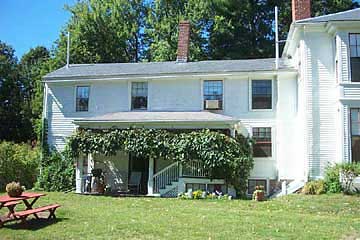
Waldo was eight years old at his father's death; and the household was in serious financial straits. There were five boys to be clothed and fed -- and educated as family tradition and innate talent required. By heroic exertion and a most rigid frugality, Mrs. Emerson succeeded in realizing her ambition for her sons.
It is related that one winter when times were especially hard in the family, Ralph and his brother Edward had but one great-coat between them and had to take turns in going without and in bearing the taunts of their school-fellows, calling after them -- "Whose turn is it to wear the coat to-day?"
It is said, too, that Ralph Waldo was obliged on one occasion to forego the reading of the second volume of some work drawn from a circulating library because the pennies needed to secure it were not to be spared. Yet out of the enforced economy and the life bare of material comfort, the boys emerged sweet- tempered, nobly mannered, and with the best academic training to be had. All but one were graduates of Harvard College.
There are not many records of Emerson's schooldays. He studied at the Boston Latin School, and entered Harvard at fourteen. Through his appointment as President's messenger, he had his lodging free in the President's house, and waiting on table in the commons paid his board. He was not conspicuous as a student, yet was always the scholar; not talkative, his utterances were well weighed and deliberate.
Emerson entrance gentle and amiable, his personality lacked a little, perhaps, in masculine vigor. For mathematics, Emerson had no faculty; but in all subjects of a literary sort, he took a good stand. Like most students who develop into geniuses, he read widely in authors not prescribed in his course. He won prizes in English composition, and at his graduation, in 1821, delivered the poem for the class.
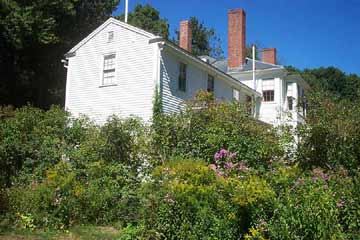 After leaving Harvard, Emerson taught for several years, at first in a suburban school for girls, kept by his brother William, where the young instructor does not seem to have been altogether charmed with the teacher's lot. It was at this time that he composed one of his most widely known poems, Good-bye, proud world! I'm going home.
After leaving Harvard, Emerson taught for several years, at first in a suburban school for girls, kept by his brother William, where the young instructor does not seem to have been altogether charmed with the teacher's lot. It was at this time that he composed one of his most widely known poems, Good-bye, proud world! I'm going home.
The latter half of this poem is descriptive of the sylvan retreat amid the rocks and pines at Canterbury, whither Mrs. Emerson had recently removed -- a district now included within the limits of Franklin Park. The lines are significant of the spirit of this nature lover at the age of twenty.
Emerson was also employed in a characteristic New England "academy" in the country near Lowell. His manner in the schoolroom was impressive; his self-control was perfect, he never punished except with words. His last experience as a schoolmaster was in Cambridge.
In 1823, Emerson began studying for the ministry. Descended from a long line of ministers, deeply spiritual in nature and equally a passionate seeker after truth, full of ideals of helpfulness and philanthropy, this was the natural course; but his activities in this profession were brief. He was ordained in 1829 as associate pastor of the Second Church in Boston, the historic Old North, which in the preceding century had flourished for sixty years under the ministry of the Mathers, father and son.
It was now one of the important pulpits of Unitarianism. The young minister, who in a few months became the sole incumbent, took an active interest in public affairs; he was a member of the school board and was chosen chaplain of the State Senate.
He invited anti-slavery lecturers into his pulpit and helped philanthropists of all denominations in their work. Three months after his ordination, however, Emerson found himself fettered even by the liberal doctrines of the Unitarians; and in 1832, disapproving the continuance of the Lord's Supper as a permanent rite, he presented his scruples in a sermon to his parishioners. His views not receiving their support, he quietly withdrew from the church.
In 1834, Ralph Waldo Emerson became a resident of Concord. For a year he lived with his mother in the old-fashioned gambrel-roofed house, built as a parsonage for his grandfather, who in his time had served the Concord church. It was this house which subsequently came to be occupied by the novelist Hawthorne, and was given fame in the title of his Mosses from an Old Manse. In 1835, Emerson was married to Miss Lidian Jackson, of Plymouth, and settled in the house, then on the edge of the town, where for almost fifty years he lived his serene and uneventful life.
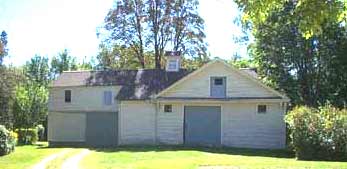 The quiet village has been a famous place ever since the day when by the rude bridge the "embattled farmers" fought the British soldiers in that first conflict of the Revolutionary war; and its fame has grown more enduring because of the remarkable group of thinkers and writers who made the town their home. To Emerson, the surroundings were peculiarly attractive. From his home a path led through open fields to the shore of beautiful Walden Pond.
The quiet village has been a famous place ever since the day when by the rude bridge the "embattled farmers" fought the British soldiers in that first conflict of the Revolutionary war; and its fame has grown more enduring because of the remarkable group of thinkers and writers who made the town their home. To Emerson, the surroundings were peculiarly attractive. From his home a path led through open fields to the shore of beautiful Walden Pond.
Among his townsmen, Emerson moved a familiar and a welcome figure. His duties as a citizen and neighbor were never shirked. Everybody knew the tall, spare man with the slight stoop of the shoulders, the shrewd, wise, tender face with its smile "like the mild radiance of a hidden sun." Whenever he spoke in the town hall or in Concord church, they turned out in large numbers to listen to his address with neighborly pride and due respect--if not with entire Emerson extension comprehension of his utterances.
In 1836, there was published anonymously in Boston a little book of about a hundred pages, entitled Nature. This was Emerson's first characteristic utterance through the printed essay. "A reflective prose poem" is what Dr. Holmes calls it: beautiful in its exaltation of spirit, poetical, mystical, vague--incomprehensible, doubtless, to many an unsympathetic reader. It was the first public enunciation of the transcendental principles on which much of the subsequent teaching was based.
"The foregoing generations beheld God and nature face to face; we, through their eyes. Why should not we also enjoy an original relation to the universe? Why should not we have a poetry and philosophy of insight and not of tradition, and a religion by revelation to us, and not the history of theirs?"
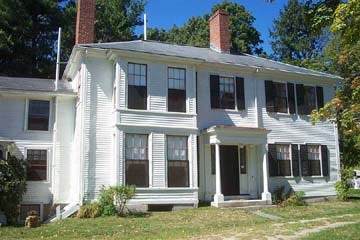 In 1871, the poet visited California. Soon after his return to Concord, his house was partially destroyed by fire. A European tour followed for relief and recreation -- a tour which extended as far as Egypt. During Mr. Emerson's absence a spontaneous movement among his friends resulted in the subscription of some twelve thousand dollars -- a gift which Mr. Emerson was with some difficulty prevailed upon to accept.
In 1871, the poet visited California. Soon after his return to Concord, his house was partially destroyed by fire. A European tour followed for relief and recreation -- a tour which extended as far as Egypt. During Mr. Emerson's absence a spontaneous movement among his friends resulted in the subscription of some twelve thousand dollars -- a gift which Mr. Emerson was with some difficulty prevailed upon to accept.
It provided for the expense of the journey and for the restoration of the house. At the home- coming in May, 1873, the entire town of Concord assembled at the station to greet its famous and well- loved citizen. The church-bells announced his arrival, and the appearance of the train was received with the cheers of the assemblage.
From the 1830s on, Emerson and a group of like-minded thinkers including Bronson Alcott, Margaret Fuller, Henry David Thoreau, and Elizabeth Palmer Peabody were based in Concord, Massachusetts. The transcendentalist community at Concord not only shared radical religious views, but also embraced forward-looking social reforms including abolition, temperance, and woman suffrage. While living in the Old Manse (pictured below), Emerson completed his manifesto, Nature, and composed the poem "Concord Hymn" which commemorates the Revolutionary War battle.
A prolific writer and thinker, his collected essays earned international acclaim, and, for decades, Emerson remained a popular lecturer. By the time of his death in 1882, the eighty-year-old radical was heralded as the "Sage of Concord."
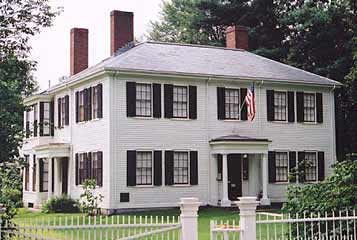 Dear Fiddlers Green, I am an English Lit. high-school teacher in Newbury Massachusetts, and it is so hard getting kids involved with projects these days. My husband has been a modeler for years and he made me this house for my American Literature class. The students loved the interactive lecture. I think next year, I will assign a building project so they can make the models themselves. Thank you, Josephine Abbott.
Dear Fiddlers Green, I am an English Lit. high-school teacher in Newbury Massachusetts, and it is so hard getting kids involved with projects these days. My husband has been a modeler for years and he made me this house for my American Literature class. The students loved the interactive lecture. I think next year, I will assign a building project so they can make the models themselves. Thank you, Josephine Abbott.
My family has a very elaborate family reunion every Fourth of July. At least 100 of us all get together from across the nation to celebrate freedom, independence, and family. I am always in charge of the cake and this year I am using this model as the cake topper on the extra large sheet cake. Actually I think all of your models would look great on top of cakes for all occasions. Maybe you should spread the word! My best wishes, Mary-Lynn Bradely, Omaha Nebraska.


